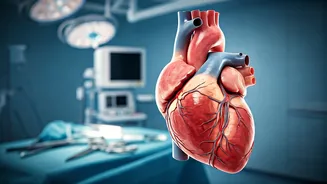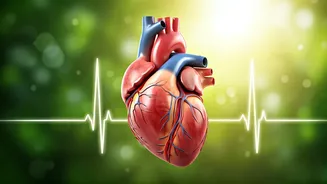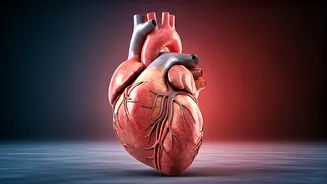Understanding Stroke Risks
To effectively reduce the chance of a stroke, understanding the risk factors involved is crucial. These risks can be broadly categorized into modifiable
and non-modifiable factors. Non-modifiable factors are those that cannot be changed, such as age, family history, and race. As age increases, the risk of stroke naturally rises. A family history of stroke also elevates the likelihood. Certain ethnic groups have a higher predisposition to strokes. On the other hand, modifiable risk factors are those that individuals can actively manage through lifestyle choices and medical interventions. These include high blood pressure, high cholesterol, smoking, diabetes, and obesity. Recognizing and addressing these factors forms the foundation of stroke prevention.
Healthy Lifestyle Choices
Adopting a healthy lifestyle is a cornerstone of stroke prevention. Regular physical activity plays a significant role in maintaining cardiovascular health. Engaging in at least 150 minutes of moderate-intensity or 75 minutes of vigorous-intensity aerobic exercise per week is recommended. Incorporating strength training exercises at least twice a week can also be beneficial. A balanced diet, rich in fruits, vegetables, whole grains, and lean proteins, is equally important. Limiting the intake of saturated and trans fats, cholesterol, and sodium can significantly reduce stroke risk. Quitting smoking is another crucial step, as smoking damages blood vessels and increases the risk of stroke. Moderating alcohol consumption is also recommended, as excessive alcohol intake can raise blood pressure and increase stroke risk.
Diet and Nutrition
Dietary choices significantly impact stroke risk. Focusing on a diet rich in fruits and vegetables provides essential vitamins, minerals, and antioxidants that protect blood vessels. Choosing whole grains over refined grains helps regulate blood sugar and cholesterol levels. Limiting sodium intake is crucial for managing blood pressure, which is a major stroke risk factor. Healthy fats, such as those found in avocados, nuts, and olive oil, are beneficial for cardiovascular health. Limiting red meat and processed foods helps reduce saturated fat and cholesterol intake. Consider the DASH (Dietary Approaches to Stop Hypertension) diet, which emphasizes fruits, vegetables, low-fat dairy, and whole grains, to effectively manage blood pressure and reduce stroke risk. Additionally, staying hydrated is crucial for maintaining overall health and supporting cardiovascular function.
Managing Medical Conditions
Effectively managing underlying medical conditions is a vital aspect of stroke prevention. High blood pressure, or hypertension, is a major risk factor and requires consistent monitoring and management. Regular check-ups and adherence to prescribed medications are essential. High cholesterol levels increase the risk of plaque buildup in arteries, so monitoring and treating high cholesterol through lifestyle changes and medication, if necessary, is important. Diabetes also increases the risk of stroke. Maintaining blood sugar levels within a healthy range through diet, exercise, and medication can significantly reduce this risk. Atrial fibrillation, an irregular heart rhythm, increases the risk of blood clots that can lead to stroke. Medical treatments, such as blood-thinning medications, can reduce the risk associated with this condition. Consulting with healthcare professionals to manage these conditions is crucial for preventing strokes.
Regular Health Check-ups
Regular medical check-ups play a pivotal role in early detection and prevention of stroke risk factors. These check-ups typically include blood pressure monitoring, cholesterol level assessments, and blood sugar tests. Discussing any family history of stroke or heart disease with a healthcare provider can help tailor preventative strategies. During these visits, doctors can assess overall cardiovascular health and advise on necessary lifestyle adjustments. Routine screenings can identify conditions, such as high blood pressure and diabetes, before they cause serious problems. Following medical recommendations and adhering to treatment plans ensures that any identified risks are effectively managed. Regular communication with healthcare providers allows individuals to stay informed about their health and receive timely advice, thereby significantly decreasing their stroke risk.
Recognizing Stroke Symptoms
Knowing how to identify stroke symptoms is critical for timely intervention. The acronym FAST can help remember the key warning signs: Face drooping, Arm weakness, Speech difficulty, and Time to call emergency services. If any of these symptoms are observed, it's crucial to seek immediate medical attention. Other symptoms may include sudden numbness or weakness in the face, arm, or leg, especially on one side of the body. Sudden confusion, trouble speaking, or understanding speech, as well as sudden trouble seeing in one or both eyes, can also indicate a stroke. Sudden trouble walking, dizziness, loss of balance, or coordination, and a severe headache with no known cause, are also potential symptoms. Quick action can significantly improve outcomes, reducing the chances of permanent disability or death.













